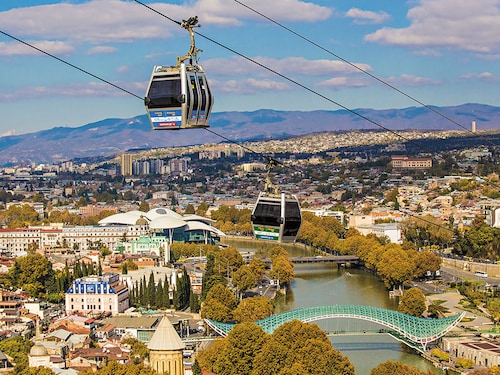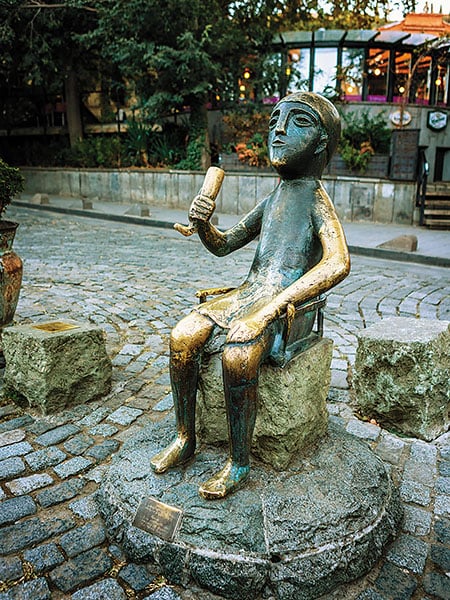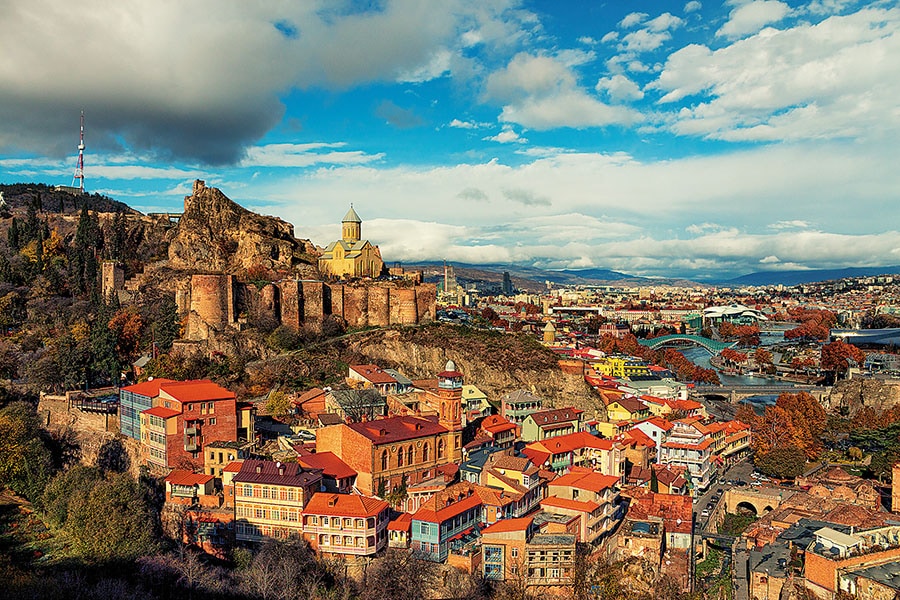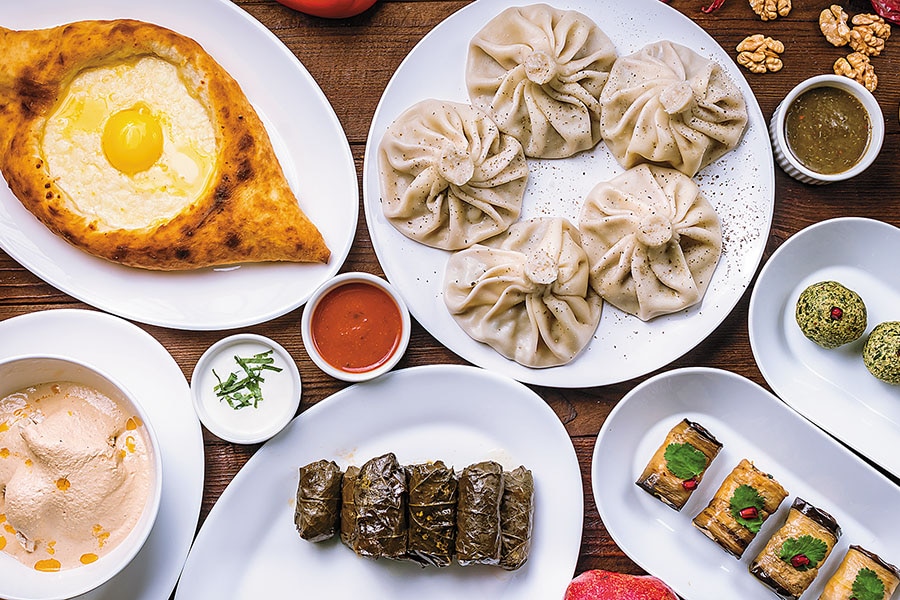Travel: 36 hours in Tbilisi
Time is no constraint in experiencing a slice of life—past and present —of this Eurasian city


 A walk through the capital of Georgia will help unearth secrets from the Soviet era
A walk through the capital of Georgia will help unearth secrets from the Soviet era
Image: Sun_Shine / Shutterstock[br]Tbilisi, the capital of Georgia and possibly the poster city of the Caucasus, is attracting more visitors every year. Close to three decades after the country seceded from the Soviet Union in 1991, the old and new stand shoulder-to-shoulder in Tbilisi, with one not overshadowing the other but complementing it in unusual and interesting ways. The result is a city and its people that are a delight to experience and interact with.
Noon: Go on a walking tour
The best way to get your bearings in a new city is to walk down its broad roads and narrow streets, spot popular landmarks and discover hidden corners. Better still, book yourself a walking tour and let experts guide you. Choose from exploring street art to unearthing secrets from the Soviet era. Meander through a vibrant market or go on a pub crawl. The options are endless and varied to different tastes.
Local guides will regale you with many stories, including how Christianity came to Georgia and why the tamada or toastmaster is the most important part of a local feast. Follow your nose and your guide down into the basement of a 15th-century bakery and try some freshly baked shoti or Georgian bread. Baked in a wood fired oven similar to a tandoor, Georgians throng their neighbourhood bakeries all day long for fresh, hot bread.
Even if those feet ache, don’t stop just yet. Walk further to discover a waterfall right in the middle of the city that’s well shielded from the tourist eye, tucked behind the brick domes of the bath houses of Abanotubani. A statue of the tamada or toastmaster, who is an important mascot at local feasts
A statue of the tamada or toastmaster, who is an important mascot at local feasts
Image: Shutterstock[br]5 pm: Relax at Rike Park
Take a cue from the locals and make your way to Rike Park to relax in the evening. From the Old Town, walk across the Peace Bridge to the park located on the left bank of the Mtkvari River. The bow shaped glass-and-steel pedestrian bridge designed by Italian architect Michele Di Lucchi is a popular spot for taking photographs.
In the park below, families with children flock to the gardens and open play areas, while couples seek quiet corners and the elderly take to the benches. Amble down the well-tended pathways to another of Tbilisi’s avant-garde additions: The twin tubular buildings that house a concert hall and exhibition centre. Exit the park and take the aerial tramway up to the Narikala Fortress in time to watch the sunset.  Tbilsi’s Old Town has many restaurants to enjoy slow, long meals
Tbilsi’s Old Town has many restaurants to enjoy slow, long meals
Image: Shutterstock[br]8 pm: End your day with dinner under the stars
Georgian cuisine is having its moment in the sun, as chefs reinvent classics using local produce from across the country. Sample a wide array of Georgian dishes—grilled meats, hearty stews, fresh salads, cheese stuffed breads and dumplings—at one of the many restaurants and cafes in the art nouveau Sololaki neighbourhood.
With tables tucked into quiet corners of a sprawling garden of the Georgian Writers’ Union building is Cafe Littera, centred around an enormous pine tree. Chef Tekuna Gachechiladze’s twist on traditional Georgian fare compliments the unusual setting of the restaurant. A big draw is her chakapuli, a sour plum and tarragon flavoured stew.
Slow, long meals are the norm in Georgia, and Cafe Littera despite its popularity is in no hurry to have a high turnover of its tables. And although the menu frequently changes, featuring a variety of seasonal produce, what remains constant is a wide selection of good Georgian wine. The ancient fortress of Narikala overlooks the city and the Mtkvari river
The ancient fortress of Narikala overlooks the city and the Mtkvari river
Image: VVVITA / Shutterstock[br]Day 2
10 am: Get a crash course on Georgian history
Delve into Georgia’s layered past with a visit to the Georgian National Museum located on Rustaveli Avenue. Walk through the displays of exquisite gold, silver and precious stone jewellery recovered from burials dating back to the 3rd millennium BC. One of the highlights is a 1.8-million-year-old hominid skull found in Southern Georgia. The findings represent the oldest evidence of human beings outside of Africa and are significantly altering our understanding of human evolution and history.
The building also houses the Museum of Soviet Occupation and the exhibits offers a detailed insight into life in the country under Soviet rule.
1 pm: Go souvenir hunting
Dry Bridge Market, as the name suggests, is located on a dry river bed and is the perfect place to find souvenirs. There’s a wide variety on offer from paintings, handicrafts and carpets to Soviet memorabilia, the latter being the biggest draw. After the fall of the Soviet Union, such markets popped up around the country, giving the locals a chance to make additional income by selling their possessions. Rare coins, used metal bottles, lunchboxes, vintage maps, radios, medals and even gas masks are up for sale. Go with time on your hands, as well as cash since credit cards are not accepted. Most of the vendors are very friendly and let you browse through their wares even if you aren’t looking to buy.  Classic Georgian cuisine is being reinvented using local produce
Classic Georgian cuisine is being reinvented using local produce
Image: Shutterstock[br] 4 pm: Unwind in true Tbilisi style
Soak in another Tbilisi tradition, and a vital part of the city’s history, as you book yourself a bath in one of the many bath houses in the Abanotubani district. The city derives its name from the natural hot sulphur springs that are found there. Popular with the likes of Alexandre Dumas and Alexander Pushkin, locals continue to flock to the bath houses to relax and catch up. Choose between a public or private bath, with or without a massage. For a complete traditional experience, opt for a kisa and get a vigorous scrub down followed by a foamy soap bath.
7 pm: Load up on Georgian classics
A hidden gem, Salobie Bia serves some of the finest Georgian food in an unassuming, cheerful setting. Handwritten menus, simple wooden furniture and local art take centre stage in this restaurant run by a husband and wife duo.
The menu, while limited, features many Georgian classics including local beer, wine and in-house brewed chacha, a local pomace brandy. A must try is their lobio or kidney bean stew served in a ceramic pot with a side of pickled vegetables and mchadi or corn bread. A former sewing factory, the Fabrika today hosts cafes, art studios, shops and a co-working space
A former sewing factory, the Fabrika today hosts cafes, art studios, shops and a co-working space
Image: Giorgi Mamasakhlisi[br] 9 pm: Grab a drink in the coolest place in town
A former sewing factory, Fabrika is today one of the city’s trendiest venues. Cafes, bars, a massive hostel, art studios, shops and a co-working space all rolled into one, there’s literally never a dull moment there. The open courtyard lit with strings of bulbs and rows of buntings is the best place to meet locals and visitors from all walks of life. Their calendar features regular workshops, exhibitions, music events and other social events.
First Published: Nov 16, 2019, 07:16
Subscribe Now